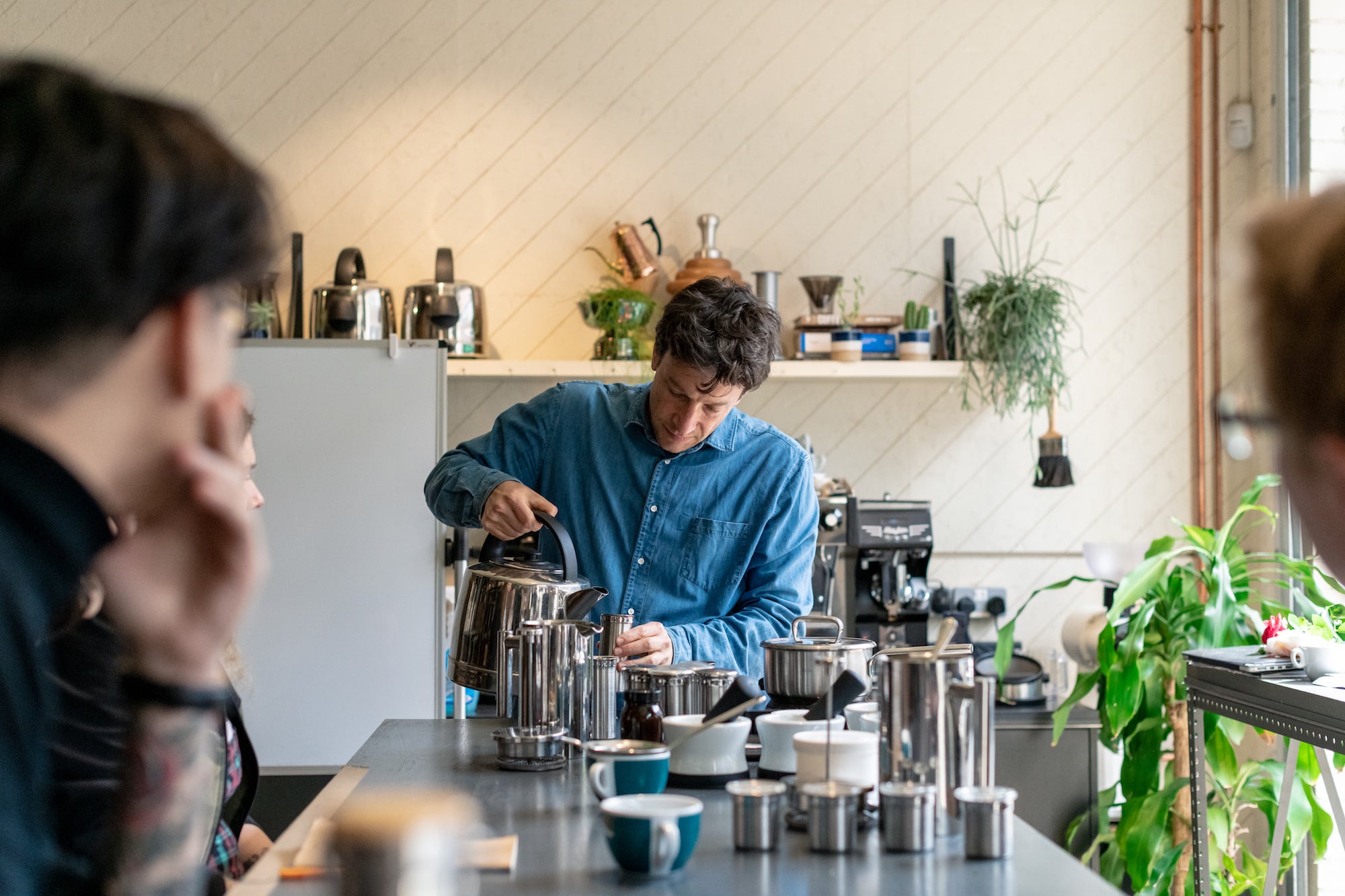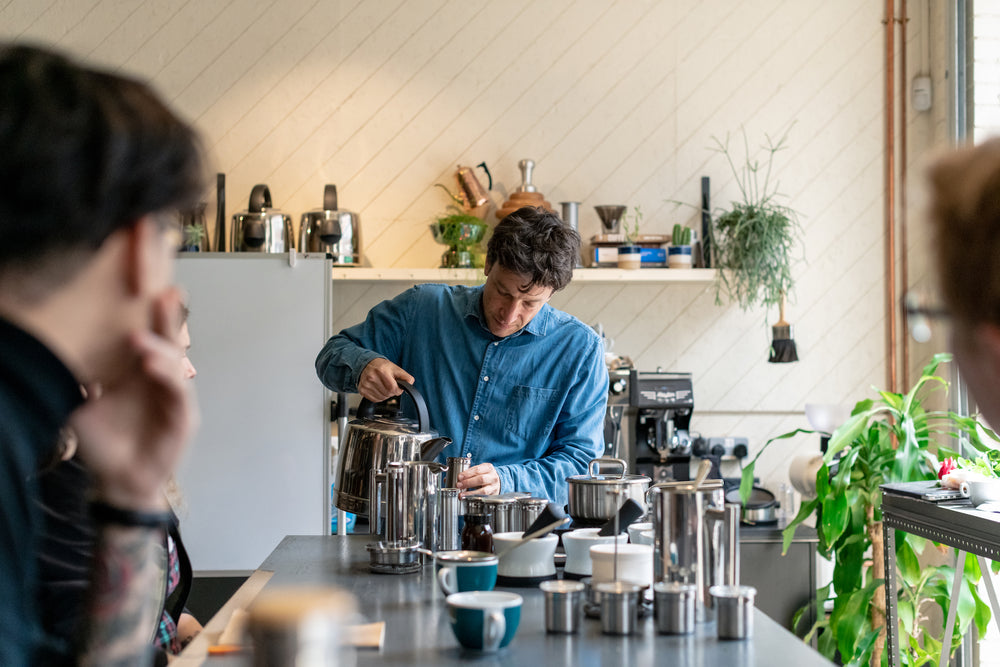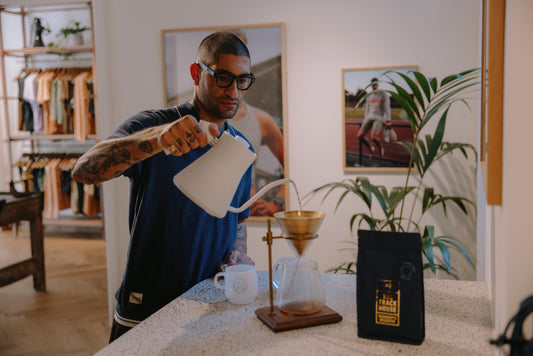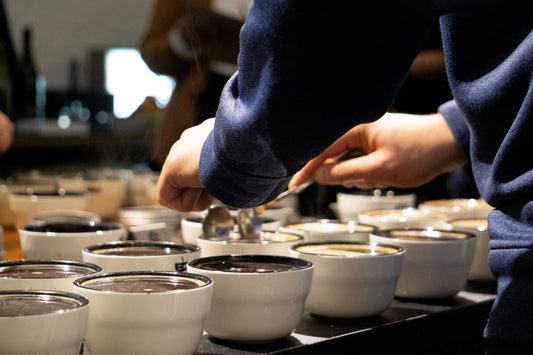
Caffeine can be a bit of a taboo in the realms of specialty coffee. We choose, quite rightly, to focus on flavour and provenance in the coffees we showcase. However, there's no getting away from the fact that caffeine plays an important part in coffee's consumption. After all, it's what gets many of us up in the morning.
With this in mind, we recently welcomed Christophe Reissfelder, formerly of Botanic Labs, to our Roastery in Bethnal Green. Well practiced in pharmacological plants and their effects on the body, he was perfectly placed to host a couple of sessions for the team on caffeinated alternatives to coffee and tea.

There are around sixty plants that contain caffeine, approximately eight of which are consumed around the world. Unsurprisingly, coffee sits comfortably at the top of the pile as the most popular, followed by the next most obvious answer: tea. But from there, caffeine sources become lesser known and are, at times, in danger of being forgotten completely.
It was these more obscure options that we wanted to familiarise ourselves with.
We started with Yerba Maté, a drink made from Ilex paraguariensis, a tree related to Holly that is grown in the Atlantic Forest in South America. We tasted two styles, with the first hailing from Brazil. Simply steamed and then dried, it had a very green taste that was reminiscent of Sencha. The second had been dried with smoke, a process more popular in Argentina, Paraguay and Uruguay. More heavily processed, it offered a more pungent aroma with notes of tobacco and leather, reminding us of roasted oolong.

Next up was Guayusa, a cousin of Maté, and native to the Amazon Rainforest. Unlike its relative, Guayasa contains no tannins at all, so you can boil it for a long time without experiencing any astringency or bitterness. Containing L-theanine, an amino acid also present in tea that's known for its calming effect, this can help to temper the jitters caused by something we're all too familiar with: caffeine overdose. L-theanine is very umami rich, making Guayusa a tasty addition to stocks and soups. As well as tasting Guayusa as a tea, we also enjoyed a delicious blueberry drink, prepared by steeping the Guayusa in a water bath for 12 hours to create a thick, dark liquid. This allowed Christophe to extract as much L-theanine as possible, which gave the drink an incredibly syrupy texture. A blueberry puree was added and the drink was served chilled.
The third plant of the day, we soon discovered, became synonymous with the UK Techno scene in the 1990s. Club goers would chew gum laced with Guarana, a powerful stimulant that contains over twice the amount of caffeine of coffee, in order to keep themselves going into the early hours. Unlike Yerba Maté and Guayusa, the seed of the Guarana fruit is the part that's used. Slightly roasted and ground into a powder, the end result is compacted into a 'stick' and then dried in the sun. To drink, the sticks are grated into hot water with a bit of sugar. When Christophe is short on time in the morning, and doesn't have time to brew coffee, he'll drizzle a sugar syrup, made using Guarana, over his porridge.

Our final stop on our voyage through caffeine is often chewed in West African countries and presented at social events to guests and loved ones, as well as being used as a sacred offering during prayers. The kola nut is native to the tropical rainforests of Africa and was the original ingredient used in Coca-Cola before a switch to synthesised caffeine was made. The taste is very bitter, so we grated it before steeping it in boiling water and adding it to a paste made from lime zest, sugar and rose petals. Served over ice with fresh lime juice, it was the perfect tonic for a warm summer's day.
These insightful sessions saw us exploring caffeine found naturally in other substances, but just like with coffee it was interesting to pursue as much deliciousness as possible. After all, if you're looking to reap the functional benefits of caffeine, why not do so in the most delicious way you can? Typically bitter herbs, barks, roots and powders touted with health benefits aren't used creatively in cuisine, more often than not being thrown in a smoothie or, even less inspiringly, taken in tablet form with zero gustatory impact. Christophe not only wanted to explore the effects but also the flavours of these ingredients, and we were more than happy to join him on his journey.

Share:








